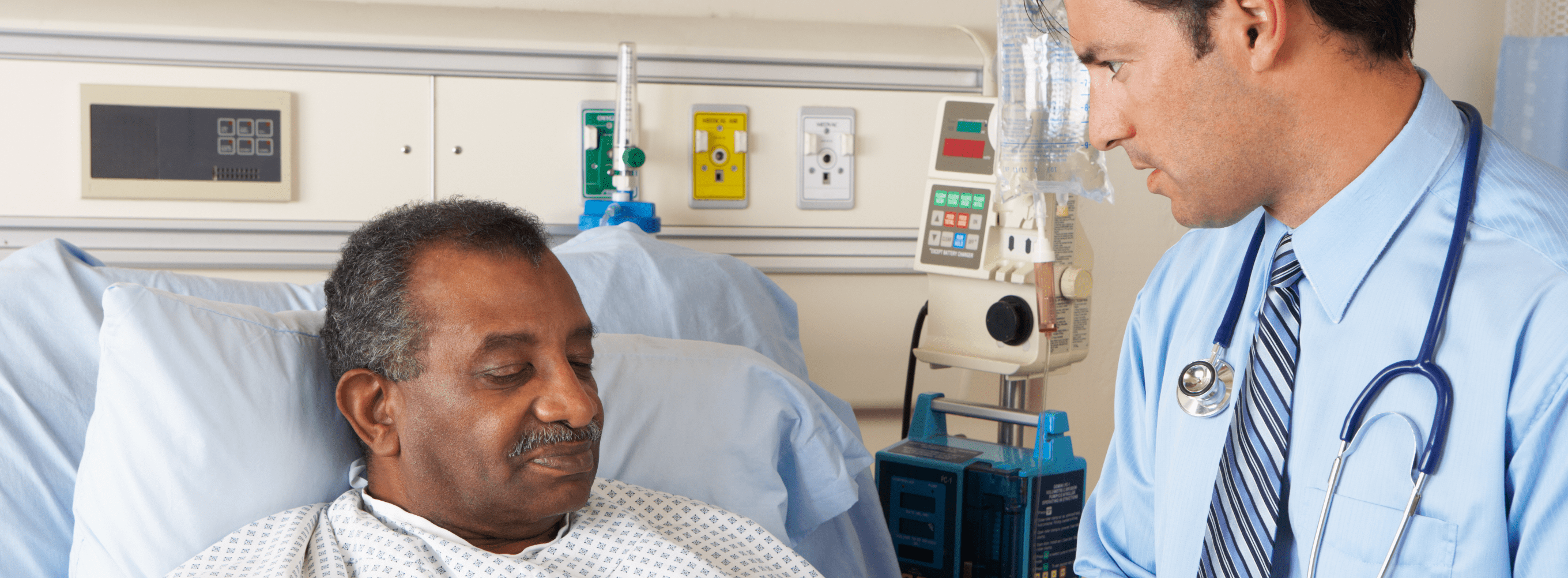
Understand Your Procedure
External Fixation Explained
An external fixator, often referred to as a "frame," is a surgical device that is designed to help maintain alignment of the boney structures in the foot and ankle while healing takes place.
There are a few different types of frames, and a surgeon will determine which is best suited for your specific case.
Circular frames are a common external fixation type. They can be static or dynamic:
- A static frame is fixed into one position for the time that it’s worn. It is designed to immobilize a specific area of the foot or ankle.
- A dynamic frame is designed with adjustable parts that allow for corrective modifications over the course of treatment. It may be used to gradually fix a deformity, close a gap, or lengthen a bony segment.

Before surgery -- Preparing for a frame
Whether you are in early discussions with your surgical team or are preparing for a scheduled surgery, the thought of wearing an external fixation device can be overwhelming. You should speak openly with your surgical team about any concerns and discuss the risks and benefits of external fixators.
Some important factors to consider may include:
How long the frame will need to be worn
Ability to maintain personal hygiene (like take a shower)
Willingness or ability to stay off your feet and rest during this time period
Risk of infection, especially in exposed areas such as pin or wire sites
Possibility of weightbearing on the device
Patient support system, whether it be family, friends, professional caregivers, or a combination
If it's decided that external fixation is the best option, you can take several steps to plan ahead.
Assemble a support team
as many of our patient stories mention, having a solid support system in place is an important way to make progress during the recovery period.
Prepare the home
- It may be helpful to rearrange furniture for easier mobility or to temporarily relocate a bedroom area to avoid stairs
- If stairs are unavoidable, installation of a temporary ramp system to enter and exit the home may be necessary
- Moving frequently accessed supplies like dishes and glassware to a more manageable location
- Placement of a seat in the shower stall for safe bathing
Stock up on supplies
surgeons may recommend some supplies to have handy post-op, like wound care products, hand sanitizer, pill organizers, heating pads, etc. Speak with your surgical center for more details and recommendations.
Arrange transportation to and from follow-up visits or important appointments
your vehicle should be one that allows easy entry and exit so the leg can stay elevated and uncompromised.
Ensure access to a camera and computer or smartphone in case your surgeon requests pictures in between visits
Cancel or reschedule activities as needed
devices may need to be worn for a couple of weeks up to several months. Be prepared for limited activity during this time according to surgeon recommendation to ensure proper healing.

After surgery -- Caring for a frame
Proper frame care may make a difference in the success of your treatment plan. A surgeon will recommend a specific plan to properly care for the device, but some general rules of thumb include:
Keeping the frame clean
this includes the external parts of the device as well as maintaining good personal hygiene.
Hands off, except for when making prescribed adjustments. Avoid temptation to tinker with the parts of the frame. If something breaks or falls out of place, the surgeon should be notified right away. [You should not attempt to remove the frame on your own.]
Handle with care
even though frames are built to endure large amounts of stress and strain, abuse may lead to broken parts and device failure.
Tips for pin tract care
The area where wires or pins intersect with your skin is often referred to as the pin-site.
Pin-site infections are a common problem associated with external fixation but may be managed with proper care. You should follow your surgical team’s specific instructions for cleaning the pin-sites, which may include scheduled cleaning with hydrogen peroxide or a soapy solution.
As a precaution, you and your support team should regularly monitor for signs of infection (such as soreness, redness, or discharge) and report any symptoms to your care team right away.
More tips can be found here.
Pin Tract Care Brochure
DOWNLOAD
Find a Surgeon
Move on from Charcot. Early prevention may be key. Don’t wait to speak with a doctor to see what treatment option is right for you.
FIND OUT MOREImportant Information
Individual results and activity levels after surgery vary and depend on many factors including age, weight, and prior activity level. There are risks and recovery times associated with surgery, and there are certain individuals who should not undergo surgery. Only a physician can tell you if this product and associated procedure are right for you and your unique circumstances. Please consult with a physician for complete information regarding benefits, risks, anticipated implant duration and possible outcomes.
AP-016836